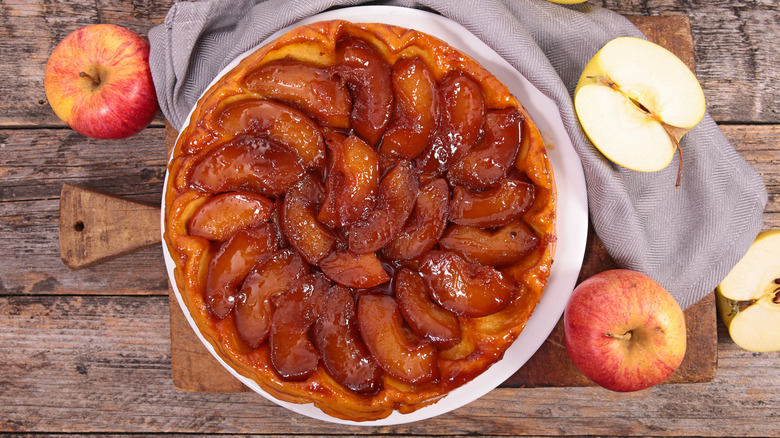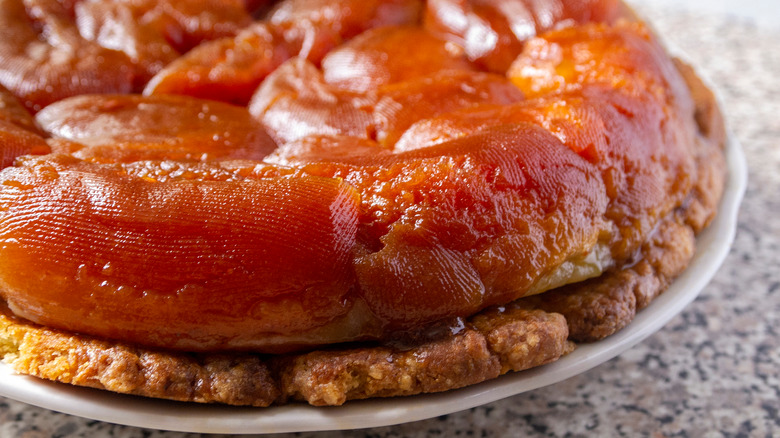The Tarte Tatin May Have Been Invented By Accident
A tarte tatin starts with coating the bottom of a pan in sugar and butter, as What's Cooking America explains, followed by a layer of apples and a pastry crust top. The whole thing gets tossed in an oven to bake, turning the bottom layer of sugar and butter into a delectable caramelized base that coats the apples. Once done, the dish is popped out of its pan upside down and should be served while still warm, often with a scoop of ice cream.
While you may think this is a backward way to make and serve an apple pie, this French dessert is cooked upside down for a reason (via National Geographic). The method allows the apples to become ultra-tender in their caramelized environment and its pastry topping (or underside, once flipped for serving) perfectly crispy. But what may seem like an intentional baking choice or stroke of genius actually could have been a happy mistake by the chef who invented it and whom the dessert is named after.
A mistake during the hunting rush
As the legend goes, in the late 19th century hunting season was underway in the woods of north-central France, per National Geographic. In a village called Lamotte-Beuvron, in the Sologne region, there was a hotel run by the Tatin sisters. Caroline Tatin handled the front of the house, while Stephanie — the elder sister — stayed in the back taking care of the fare (via Best of France).
When whipping up a traditional apple tart, Stephanie supposedly put the dish together upside down by mistake and tossed it in the oven. Other accounts say the chef perhaps just forgot to put the pastry base underneath, and in a rush decided to place it on top instead of remaking the dish. Either way, out came the inverted dessert she served.
The dish was a hit: Word of mouth spread, leading to the tarte tatin's inclusion in a 1903 geographical society journal and its recommendation in a 1920's French travel guide created by a famous restaurant critic known as Curnonsky. In the 1930s, the dish was added to the menu of popular Paris restaurant Maxim's, which many credit for sealing its fate in dessert history. While it's unclear from any of these sources if the dessert was truly an accident, given the historic connection between upside-down fruit dishes and Sologne, all acknowledge the Tatin sisters' important role in the tarte tatin's creation.

